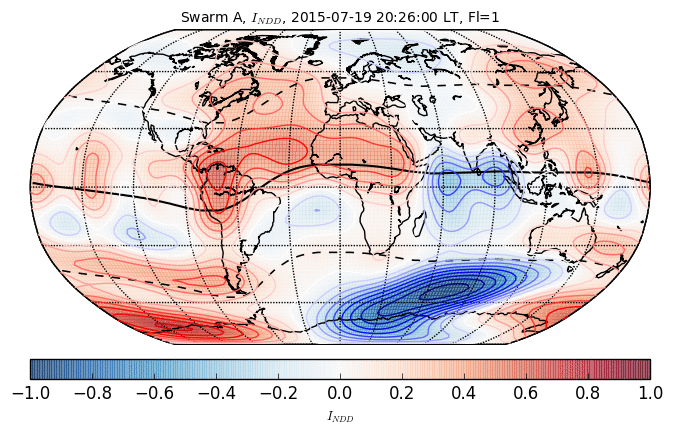Ionisation reversed diurnal cycle is one of distinctive features of the Earth`s ionosphere, which is characterised by higher values of ionospheric plasma density registered in the nighttime than in the daytime. Two well known examples of this phenomenon are the Weddell Sea Anomaly (WSA) and the mid-latitude nighttime summer anomaly (MSNA).
The Weddell Sea Anomaly (WSA) is a mid-latitude F region ionosphere phenomena taking place over the regions west of the Antarctic Peninsula.Though the WSA has been discovered more than 60 years ago, still its generation mechanism is not fully understood and its modelling remains a challenge. Initial discovery of the WSA relied on measurements from the ground network of ionosondes. Satellite observations revealed that peculiar feature of the ionosphere is not limited to the southern hemisphere only. Similar behaviour is also present in the northern hemisphere.
The Swarm4Anom project is focused on:
- detection of areas, which exhibit similar behaviour as the WSA;
- better description of the anomalies obtained with multi-instrumental measurements from the Swarm constellation;
- improvements in the climatological representation of nighttime ionospheric plasma density enhancements.
Input & output of the project
In situ registrations of electron density from the Langmuir probe on board three Swarm satellites are used to study spatial and temporal evolution of nighttime plasma density enhancements (NPDEs). The study introduces the normalized density difference index I_NDD in order to provide global estimates of the phenomenon. I_NDD is provided to User`s as higher level product derived from Swarm data.
Time evolution of the index I_NDD is provided below:

Occurrence of the WSA and MSNA